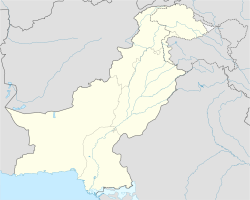Top Qs
Timeline
Chat
Perspective
Karakh Tehsil
Pakistani administrative area From Wikipedia, the free encyclopedia
Remove ads
Karakh or locally also spelled Karkh[a] is an administrative subdivision (tehsil) of Khuzdar District in Balochistan, Pakistan.[1] It is one of ten administrative units in the district, comprising tehsils and sub-tehsils, alongside Aranji, Gresha, Khuzdar, Nal, Moola, Ornach, Saroona, Wadh, and Zehri.
Remove ads
Geography
Karakh Tehsil, is predominantly defined by mountainous and arid terrain, covers an area of approximately 1,352 square kilometres (135,200 ha).[1] It is located southeast of Moola Tehsil, east and northeast of Khuzdar Tehsil, and borders Jhal Magsi District to the west and Qambar Shahdadkot District in Sindh to the east.

Among its notable natural landmarks is the second-highest peak of the Central Brahui Range, part of the Kirthar Mountains, rising to an elevation of 2,096 metres. This peak is situated in Mouza Dhadaro, within Union Council Sunchuko, and is locally known as Kuttay Ji Qabar ("Dog's Grave" in Urdu) and Kuchak na Qabar in Brahui. The site holds cultural significance due to its association with a prominent Brahui folktale.[4][5] Located approximately 25 kilometres from the Sindh-Balochistan boundary, the area is subject to a jurisdictional dispute between the provincial governments of Sindh and Balochistan, primarily due to its perceived value as a protected heritage and tourism site.[6][7][8][9]
Remove ads
Population
According to the 2023 national census, Karakh tehsil has a total population of 35,990, all residing in rural areas.[1] The tehsil encompasses 6,723 households, reflecting its predominantly rural character.[11]
The literacy rate in the tehsil stands at 32.14%, reflecting limited access to educational resources. This figure includes a male literacy rate of 39.70% and a significantly lower female literacy rate of 24.41%, highlighting a notable gender disparity in educational attainment.[2]
Remove ads
Languages
In Karakh Tehsil, Brahui is the predominant language, spoken by approximately 24,489 (~68.08%) people, followed by Sindhi, spoken by around 7,070 (~19.65%) individuals, and 4,255 (~11.83%) Balochi speakers.[3] The dominance of Brahui reflects the tehsil's historical roots as part of the central Brahui-speaking highlands of Balochistan, where tribal and cultural affiliations have preserved the language over centuries. Balochi, while present, plays a thirdly role in local communication, often coexisting with Brahui in multilingual households and public life.[12] The Sindhi spoken in the region is largely the distinct Lasi dialect of Sindhi.[13]
References and notes
Wikiwand - on
Seamless Wikipedia browsing. On steroids.
Remove ads



